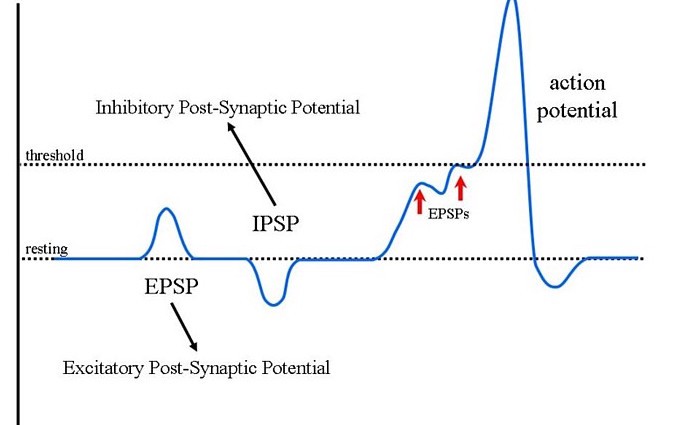TOPIC#03
There are 4 chapters under this heading:
Chapter 5,6,7 and 8 from guyton.
Study Scheme:
There are 9 MCQs and 2 SEQs from this topic.
This is one of the most important topic for exams both theory and practice point of view. This topic is favourite of every internal and external examiner.So,keeping in view the importance of this topic,it needs better attention.
•Read chapters thoroughly.
•Highlight important points
•Remember the values mentioned in various chapters.
•Make flow charts.
•Focus on repeatedly asked questions
•Highlight important points
•Remember the values mentioned in various chapters.
•Make flow charts.
•Focus on repeatedly asked questions
Important Questions
Chapter # 05:
Membrane potential and action potential
1.what is neuron,nerve fiber,classification of nerve fiber,classifications of neurons.
2.Resting membrane potential and its origin.
3.Action potential and its different stages with diagram.
4.Mechanism of activation and inactivation of voltage gated channels.
5.Properties of action potential.
6.Properties of nerve fibers
7.what is biphasic,compound and complex action potential.
8.Saltatory conduction
9.Strength Duration curve
10.what is rheobase current, utilization time,relative refractory period,absolute refractory period.
11.Difference b/w EPSP and IPSP
12.Different nerve injuries.
2.Resting membrane potential and its origin.
3.Action potential and its different stages with diagram.
4.Mechanism of activation and inactivation of voltage gated channels.
5.Properties of action potential.
6.Properties of nerve fibers
7.what is biphasic,compound and complex action potential.
8.Saltatory conduction
9.Strength Duration curve
10.what is rheobase current, utilization time,relative refractory period,absolute refractory period.
11.Difference b/w EPSP and IPSP
12.Different nerve injuries.
Chapter #06:
Contraction of Skeletal Muscle
1.What is sarcomere,thick and thin filaments,Z disk and titin protein.
2.General mechanism of muscle contraction
3.Molecular mechanism of muscle contraction
4.What is the role of troponin,mysosin,actin and calcium ions in causing muscle contraction.
5.Walk along theory(vv.imp)
6.Sources of energy for muscle contraction
7.Difference b/w red and white muscle fibers.
8.Difference b/w tetany and tetanization.
9.what is rigor mortis.
2.General mechanism of muscle contraction
3.Molecular mechanism of muscle contraction
4.What is the role of troponin,mysosin,actin and calcium ions in causing muscle contraction.
5.Walk along theory(vv.imp)
6.Sources of energy for muscle contraction
7.Difference b/w red and white muscle fibers.
8.Difference b/w tetany and tetanization.
9.what is rigor mortis.
Chapter #07:
Excitation of Skeletal muscle
Excitation of Skeletal muscle
1.Physiological anatomy of neuromuscular junction and motor
end plate.
2.Formation ,secretion and destruction of acetycholine.
3.End plate potential and how it is produced.
4.Effect of different drugs on neuromuscular junction.
5.Myasthenia Gravis( vv.imp).
6.Excitation contraction coupling with diagram.
end plate.
2.Formation ,secretion and destruction of acetycholine.
3.End plate potential and how it is produced.
4.Effect of different drugs on neuromuscular junction.
5.Myasthenia Gravis( vv.imp).
6.Excitation contraction coupling with diagram.
Chapter # 08
Excitation
1.Types of smooth muscle
2.Comparison of Skeletal and smooth muscle contraction.
3.what is Latch mechanism and its regulation.
4.Mechanism of smooth muscle contraction and relaxation with diagram.
2.Comparison of Skeletal and smooth muscle contraction.
3.what is Latch mechanism and its regulation.
4.Mechanism of smooth muscle contraction and relaxation with diagram.
5.source of calcium ion in different muscles.
6.Action potential in smooth muscle.
6.Action potential in smooth muscle.
7.Effect of local tissue factors and hormones on smooth muscle contraction.
Important topics for MCQs:
•Strength duration curve.
•Resting membrane potential and action potential.
•activation and inactivation of voltage gated channels.
•Stabilizer and local anaesthetics.
•sarcomere structure and its components.
•walk along theory.
•Muscular dystrophy
•Drugs that block or enhance the transmission at neuromuscular junction.
•myasthenia gravis
•mechanism of smooth muscle Contraction and relaxation
•Resting membrane potential and action potential.
•activation and inactivation of voltage gated channels.
•Stabilizer and local anaesthetics.
•sarcomere structure and its components.
•walk along theory.
•Muscular dystrophy
•Drugs that block or enhance the transmission at neuromuscular junction.
•myasthenia gravis
•mechanism of smooth muscle Contraction and relaxation
Important tables and figures:
Figure 5.6 on page#65
Figure 5.17 on page#72
Figure 6.5 on page#78
Figure 6.8 on page#80
Figure 6.9 on page#81
Figure 7.1,7.2 and 7.3 on page#90,92.
Figure 7.6 on page#95
Figure 8.3,8.5 on page #100,101.
Figure 8.7 on page#103.
Figure 5.17 on page#72
Figure 6.5 on page#78
Figure 6.8 on page#80
Figure 6.9 on page#81
Figure 7.1,7.2 and 7.3 on page#90,92.
Figure 7.6 on page#95
Figure 8.3,8.5 on page #100,101.
Figure 8.7 on page#103.












No comments:
Post a Comment